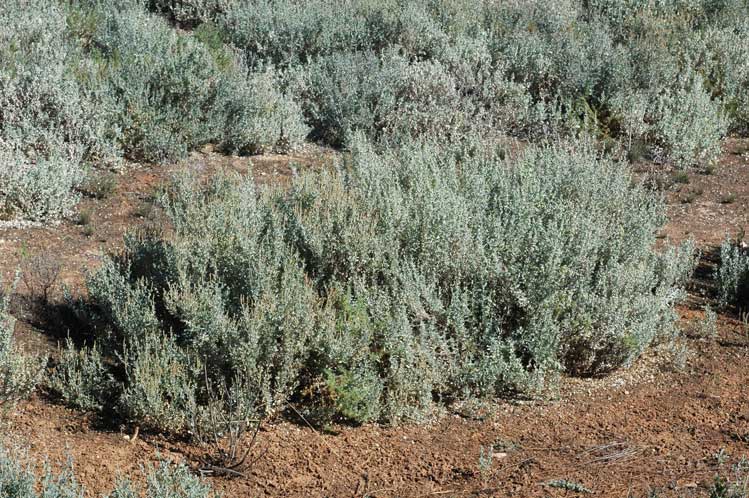Bladder Saltbush on:
[Wikipedia]
[Google]
[Amazon]

 ''Atriplex vesicaria'', commonly known as bladder saltbush, is a species of flowering plant of the family ''
''Atriplex vesicaria'', commonly known as bladder saltbush, is a species of flowering plant of the family ''

 ''Atriplex vesicaria'', commonly known as bladder saltbush, is a species of flowering plant of the family ''
''Atriplex vesicaria'', commonly known as bladder saltbush, is a species of flowering plant of the family ''Amaranthaceae
Amaranthaceae is a family of flowering plants commonly known as the amaranth family, in reference to its type genus '' Amaranthus''. It includes the former goosefoot family Chenopodiaceae and contains about 165 genera and 2,040 species, making i ...
'' and is endemic
Endemism is the state of a species being found in a single defined geographic location, such as an island, state, nation, country or other defined zone; organisms that are indigenous to a place are not endemic to it if they are also found els ...
to arid
A region is arid when it severely lacks available water, to the extent of hindering or preventing the growth and development of plant and animal life. Regions with arid climates tend to lack vegetation and are called xeric or desertic. Most ...
and semi-arid inland regions of Australia. It is an upright or sprawling shrub with scaly leaves and separate male and female plants, the fruit often with a bladder-like appendage.
Description
''Atriplex vesicaria'' grows as an upright or sprawling,perennial
A perennial plant or simply perennial is a plant that lives more than two years. The term ('' per-'' + '' -ennial'', "through the years") is often used to differentiate a plant from shorter-lived annuals and biennials. The term is also wide ...
shrub up to high. The leaves are sessile
Sessility, or sessile, may refer to:
* Sessility (motility), organisms which are not able to move about
* Sessility (botany), flowers or leaves that grow directly from the stem or peduncle of a plant
* Sessility (medicine), tumors and polyps that ...
, elliptic to oblong or egg-shaped with the narrower end towards the base, long, wide and scaly. The edges of the leaves are entire, occasionally toothed, with the leaf tips pointed or blunt.
Male and female flowers are usually borne on separate plants. Male plants usually bear flowers in clusters on simple or branched panicle
A panicle is a much-branched inflorescence. (softcover ). Some authors distinguish it from a compound spike inflorescence, by requiring that the flowers (and fruit
In botany, a fruit is the seed-bearing structure in flowering plants that is ...
s or spikes long, the flowers with five similar perianth
The perianth (perigonium, perigon or perigone in monocots) is the non-reproductive part of the flower, and structure that forms an envelope surrounding the sexual organs, consisting of the calyx (sepals) and the corolla (petals) or tepals when ca ...
segments. Female flowers are borne in clusters of two to many in upper leaf axils and lack a perianth, the ovary
The ovary is an organ in the female reproductive system that produces an ovum. When released, this travels down the fallopian tube into the uterus, where it may become fertilized by a sperm. There is an ovary () found on each side of the bod ...
surrounded by two bracteoles
In botany, a bract is a modified or specialized leaf, especially one associated with a reproductive structure such as a flower, inflorescence axis or cone scale. Bracts are usually different from foliage leaves. They may be smaller, larger, or of ...
. After flowering, the bracteoles swell to long and wide, and usually have a thin-walled, bladder-like appendage attached.
Taxonomy
''Atriplex vesicaria'' was first formally described in 1870 byGeorge Bentham
George Bentham (22 September 1800 – 10 September 1884) was an English botanist, described by the weed botanist Duane Isely as "the premier systematic botanist of the nineteenth century". Born into a distinguished family, he initially studi ...
in ''Flora Australiensis
''Flora Australiensis: a description of the plants of the Australian Territory'', more commonly referred to as ''Flora Australiensis'', and also known by its standard abbreviation ''Fl. Austral.'', is a seven-volume flora of Australia published b ...
'' from an unpublished manuscript by Robert Heward. The specific epithet
In taxonomy, binomial nomenclature ("two-term naming system"), also called nomenclature ("two-name naming system") or binary nomenclature, is a formal system of naming species of living things by giving each a name composed of two parts, bot ...
(''vesicaria'') means "bladder-like" or "inflated", referring to the appendages on the fruiting bodies. The name 'Atriplex' is from the Latin ''atriplexum'', meaning orache, a plant used as a spinach substitute.
In 1938, Paul Aellen
{{Short pages monitor